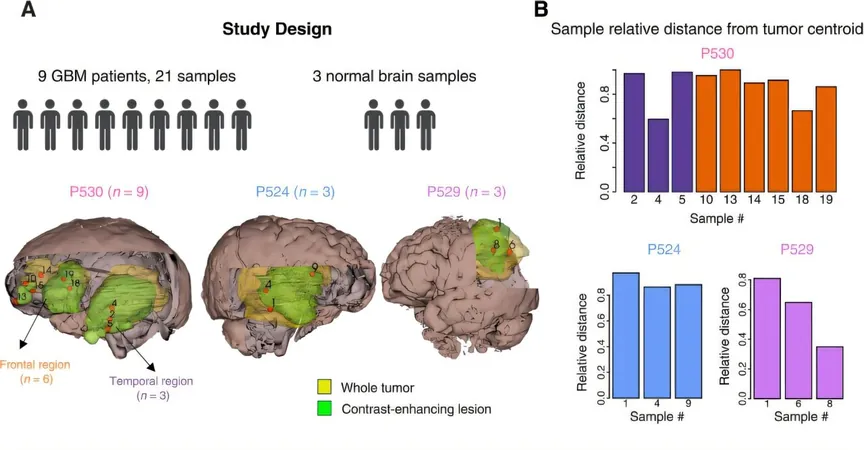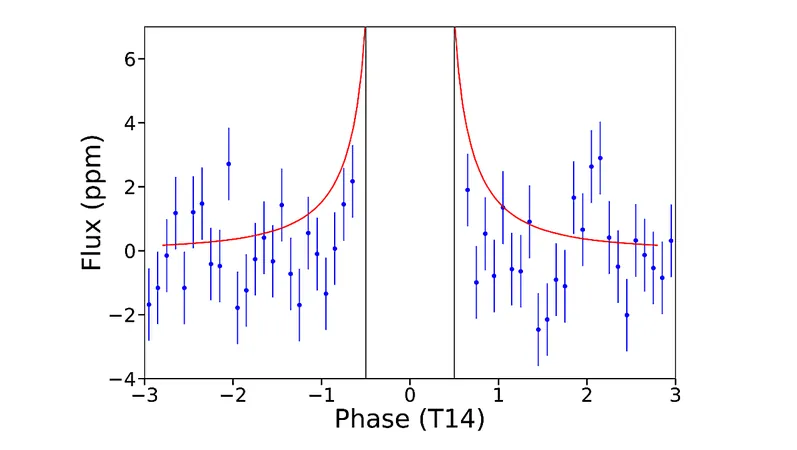
Unlocking the Secrets of Glioblastoma: A Study Reveals Tumor Complexity
2025-06-02
Author: Daniel
A groundbreaking study from Northwestern Medicine has uncovered astonishing insights into glioblastoma tumors, revealing that their genetic makeup is not only complex but also varies dramatically within different regions of the same tumor.
Glioblastoma, known as the deadliest form of primary brain cancer, poses a significant challenge with a disheartening five-year survival rate of just 6.9%, as reported by the National Brain Tumor Society. Despite advancements in treatment methods, patients face an average survival of merely eight months after diagnosis.
One major hurdle in treating glioblastoma is its ability to rapidly mutate its DNA. Dr. Feng Yue, the study's senior author and a leading figure in molecular medicine, expressed, "Our previous work indicated that gene expression varies within different areas of the same tumor. This latest study dives deeper into the mechanisms behind these differences, aiming to clarify why gene expression levels fluctuate across various tumor regions and patient samples."
In this pivotal research, Dr. Yue and his team employed cutting-edge Hi-C sequencing technology to examine the intricate three-dimensional organization of the genomes in nine glioblastoma samples and three healthy brain samples.
The results were striking; they identified unique genome structures associated with glioblastomas, which differ significantly from those found in healthy tissues. Moreover, variations were not only apparent between patients but were also observed within different locations of the same tumor.
"We discovered specific genome folding patterns characteristic of glioblastomas that contrast sharply with normal samples. Even within the same tumor, distinct regions exhibited diverse genomic structures," stated Yue.
This research underscores the immense complexity of glioblastoma and its implications for treatment strategies. Dr. Yue noted, "This genetic diversity is a primary reason treatments often fail. It’s crucial to target genetic anomalies that are present throughout the entire tumor, rather than focusing on mutations that may only occur in isolated areas."
Looking ahead, Dr. Yue's team plans to investigate methods to modify genome structure and regulation to enhance therapeutic outcomes. He elaborated, "In our study, we identified critical regulatory elements that influence significant oncogenes and tumor suppressors. Determining whether we can manipulate these elements to rectify cancer-specific dysregulation is the next step in our research. We believe that understanding 3D genome folding is vital to this process."



 Brasil (PT)
Brasil (PT)
 Canada (EN)
Canada (EN)
 Chile (ES)
Chile (ES)
 Česko (CS)
Česko (CS)
 대한민국 (KO)
대한민국 (KO)
 España (ES)
España (ES)
 France (FR)
France (FR)
 Hong Kong (EN)
Hong Kong (EN)
 Italia (IT)
Italia (IT)
 日本 (JA)
日本 (JA)
 Magyarország (HU)
Magyarország (HU)
 Norge (NO)
Norge (NO)
 Polska (PL)
Polska (PL)
 Schweiz (DE)
Schweiz (DE)
 Singapore (EN)
Singapore (EN)
 Sverige (SV)
Sverige (SV)
 Suomi (FI)
Suomi (FI)
 Türkiye (TR)
Türkiye (TR)
 الإمارات العربية المتحدة (AR)
الإمارات العربية المتحدة (AR)